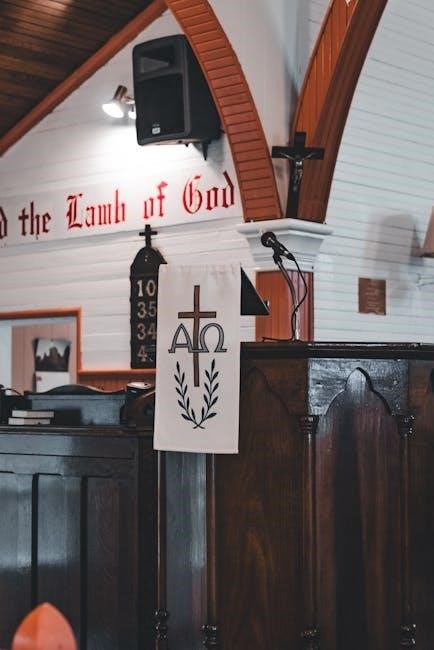The 1982 Hymnal PDF: A Comprehensive Guide
Welcome to a detailed exploration of the 1982 Hymnal, now readily accessible in PDF format. This guide will navigate you through its availability, usage, and significance. It covers free downloads, personal worship, church services, hymn selection, themes, indexes, copyright information, and comparisons to other hymnals. Discover its lasting legacy.

The 1982 Hymnal stands as a significant collection within the Episcopal Church, representing a culmination of efforts to provide a comprehensive and theologically rich resource for worship. Published by the Church Hymnal Corporation, it embodies a wide range of hymns and service music, reflecting diverse traditions and contemporary compositions. This hymnal addresses the Church’s mission to spread the Good News in a changing world, incorporating both traditional hymns and pieces that resonate with modern sensibilities.
The Hymnal 1982 engages with critical social justice issues, reflecting the growing awareness of social inequalities within the Episcopal Church and broader society. Its development involved the Standing Commission on Church Music over a decade, resulting in a collection that embraces historical depth and contemporary relevance. Many new hymns and liturgical music were added. This hymnal serves as a vital tool for both personal devotion and communal worship, enriching the spiritual lives of congregations and individuals alike. It incorporates many of the riches of contemporary hymn-writing. It is designed for congregational use.

Availability of the 1982 Hymnal in PDF Format
The 1982 Hymnal, a cornerstone of Episcopal worship, is increasingly accessible in PDF format, offering convenience and portability for users. While a fully licensed, free PDF version may be challenging to find due to copyright restrictions, several options exist for accessing the hymnal digitally. Internet Archive hosts scanned versions of the hymnal, allowing users to browse page by page. Some websites offer individual hymns or selections from the hymnal as downloadable PDFs, catering to specific needs.
It’s essential to respect copyright laws when seeking digital versions. Some resources may provide access for personal or educational use, while others may require permission for reproduction or distribution. Online platforms and forums dedicated to church music often share information about available PDF resources, guiding users to legitimate sources. The digital availability of the 1982 Hymnal ensures its continued relevance and accessibility in the digital age. Some resources offer digital indexes with scans of individual items.
Downloading a Free PDF Copy
Finding a completely free and legally downloadable PDF copy of the entire 1982 Hymnal can be difficult, primarily due to copyright restrictions held by the Church Hymnal Corporation. However, there are strategies to explore; The Internet Archive offers a scanned version, accessible for online viewing, which effectively serves as a digital facsimile, though not a directly downloadable PDF.
Some websites and online forums dedicated to church music may offer individual hymns or selections from the hymnal in PDF format, often for free. Be cautious and verify the legality of these sources. Check for any usage permissions or copyright notices. Educational institutions or libraries might provide access to the hymnal in digital form through their online resources, potentially requiring institutional login credentials. Remember to always respect copyright laws when accessing and using digital versions of the hymnal.
Using the PDF for Personal Worship
The PDF version of the 1982 Hymnal offers a convenient way to incorporate traditional hymns into your personal worship. With the PDF, you can easily access a vast collection of hymns from your computer, tablet, or smartphone, allowing for spontaneous moments of reflection and praise.
Utilize the search function to quickly find hymns that resonate with your current spiritual needs or the day’s liturgical theme. Create personalized playlists or collections of favorite hymns for repeated use. The digital format allows you to adjust the font size for comfortable reading and annotate specific verses that hold personal significance.
Consider using the PDF during personal prayer time, devotional studies, or quiet moments of contemplation. The hymns can provide a source of comfort, inspiration, and connection to a rich tradition of Christian worship. The PDF allows you to engage with the hymns in a way that is tailored to your individual preferences and spiritual journey.
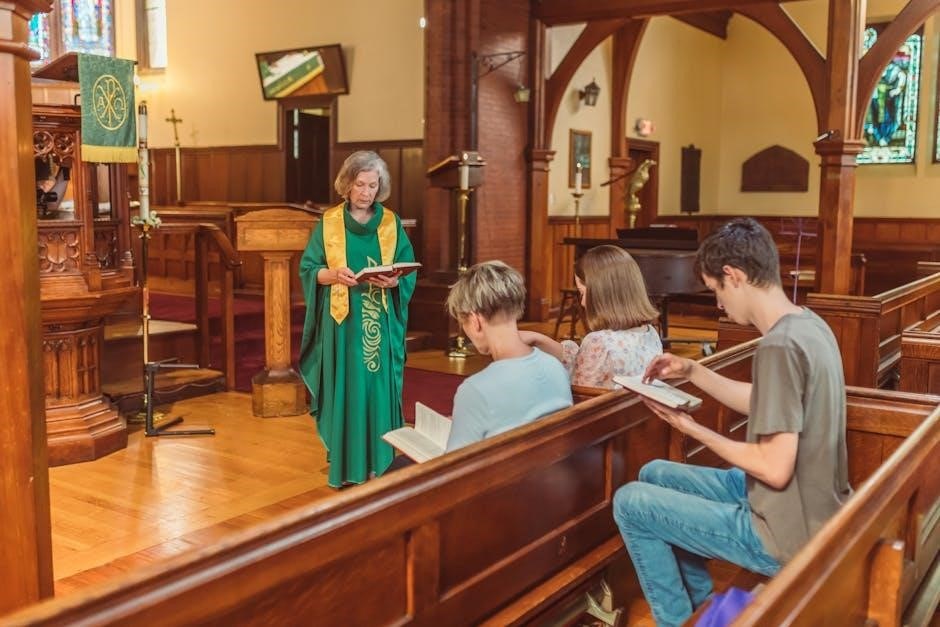
Using the PDF for Church Services
The PDF version of the 1982 Hymnal offers several advantages for use in church services, although practical considerations must be addressed. Projecting hymns from the PDF onto a screen eliminates the need for physical hymnals, saving costs and reducing paper waste. The digital format allows for easy adjustment of font size and display settings to suit the congregation’s needs.
However, copyright restrictions must be carefully observed, and necessary permissions obtained for public performance and display. Furthermore, technological infrastructure, such as projectors and screens, is required.
Consider using the PDF to supplement existing hymnals, providing access to additional verses or alternative arrangements. The PDF can also be valuable for smaller congregations or those with limited resources, offering a cost-effective way to provide hymnody. Training may be needed for those unfamiliar with digital hymnals.
Hymn Selection and Themes in the 1982 Hymnal
The 1982 Hymnal represents a diverse collection of hymns, carefully selected to reflect the theological and liturgical breadth of the Episcopal Church. The hymnal includes traditional hymns from various historical periods, alongside contemporary compositions that address modern concerns and experiences.
Themes within the hymnal encompass a wide range of Christian beliefs and practices, including praise and adoration, lament and penitence, faith and hope, love and compassion, and justice and peace. The selection process aimed to balance familiar favorites with lesser-known gems, enriching the worship experience for congregations.
The hymnal seeks to provide a musical vocabulary that resonates with diverse communities. Careful consideration was given to inclusive language, ensuring that the hymns speak to all members of the church. The 1982 Hymnal serves as a valuable resource for fostering spiritual growth and community engagement through music.
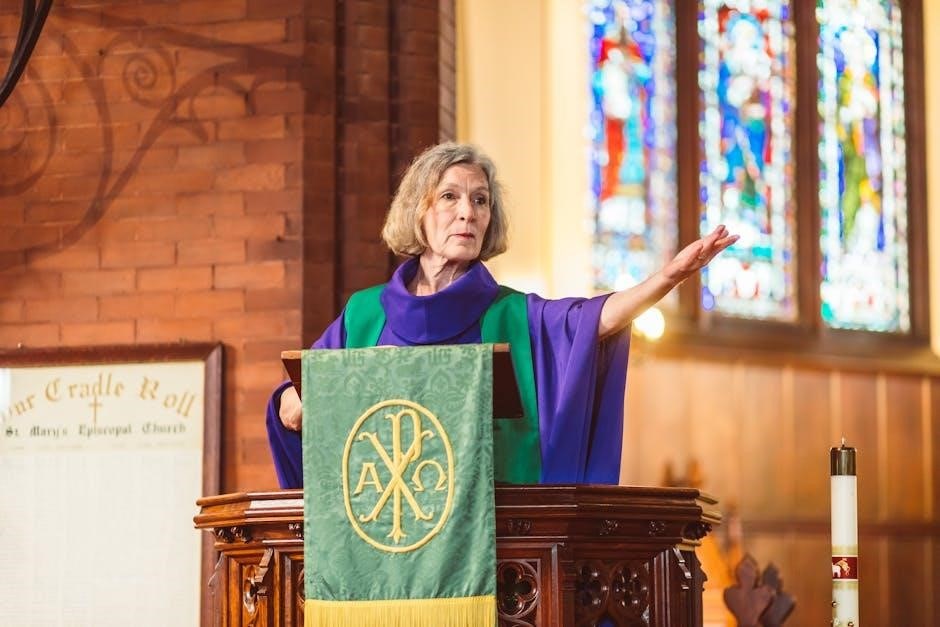
Social Justice Themes in the 1982 Hymnal
The 1982 Hymnal reflects a growing awareness of social inequalities within the Episcopal Church and the broader society, engaging with critical social justice issues. Several hymns address themes of peace, equality, environmental stewardship, and advocacy for the marginalized. These selections represent a deliberate effort to incorporate social justice concerns into congregational worship.
The hymnal includes hymns that call for an end to oppression, encourage acts of charity and compassion, and challenge systems of injustice. These hymns often draw inspiration from biblical passages that emphasize God’s concern for the poor, the oppressed, and the vulnerable.
The inclusion of these themes encourages congregations to reflect on their role in promoting social justice and to consider how their faith can inform their actions in the world. Through song, the hymnal fosters a sense of solidarity with those who suffer injustice and inspires hope for a more just and equitable world.
Notable Hymns from the 1982 Hymnal
The 1982 Hymnal contains numerous hymns that have become staples in Episcopal and other Christian traditions. These hymns are notable for their theological depth, musical beauty, and enduring appeal. They cover a wide range of themes, including praise, lament, confession, and commitment.
One such hymn is “A Mighty Fortress Is Our God,” a powerful statement of faith and resilience in the face of adversity. Another notable hymn is “Amazing Grace,” a timeless expression of God’s forgiving love and transformative power. “Be Thou My Vision” is cherished for its Celtic melody and its focus on Christ as the center of one’s life.
“Come, Thou Fount of Every Blessing” is a hymn of gratitude for God’s provision and guidance. “How Great Thou Art” evokes awe and wonder at God’s creation and majesty. These hymns, among others, contribute to the rich tapestry of the 1982 Hymnal, offering profound and meaningful worship experiences.
Indexes and Search Features

The 1982 Hymnal is equipped with comprehensive indexes and search features, making it easy to locate specific hymns and related information. These features are particularly useful when accessing the hymnal in PDF format. The indexes include listings by title, first line, author, composer, tune name, and metrical index.
The topical index allows users to find hymns relevant to specific themes, such as Advent, Christmas, Lent, Easter, or topics like love, peace, and justice. Scriptural references are also indexed, connecting hymns to relevant passages in the Bible.
When using the PDF version, electronic search functions enable quick and efficient retrieval of hymns by keywords or phrases. This is especially helpful when one only remembers a fragment of a hymn’s lyrics or tune name. These indexes and search features enhance the usability of the 1982 Hymnal, making it a valuable resource for worship planning and personal devotion.
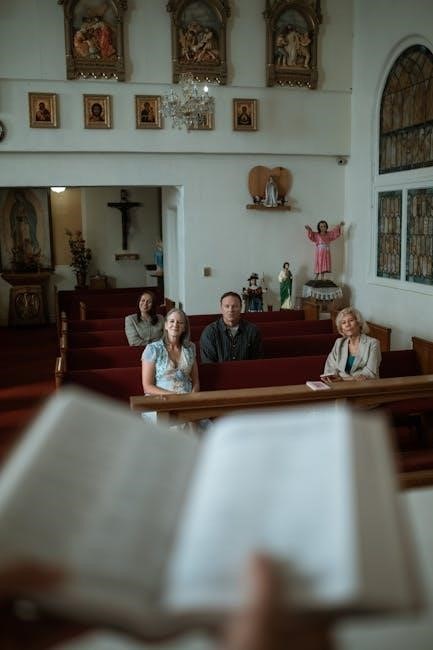
Authors, First Lines, and Tune Names
The 1982 Hymnal meticulously catalogues hymns by author, first line, and tune name, providing multiple avenues for locating specific pieces. Knowing the author of a hymn can often provide insight into its theological or historical context, enriching one’s understanding and appreciation. The hymnal includes works from renowned hymn writers throughout history, as well as contemporary authors.
The index of first lines is invaluable when only a fragment of a hymn’s text is remembered. This feature allows users to quickly identify the hymn and access its full lyrics and musical score. Similarly, the tune name index is helpful for those familiar with the melody of a hymn but unsure of its title or number. Each tune name is cross-referenced with the corresponding hymn numbers, making it easy to locate different hymns that share the same melody. This comprehensive indexing system enhances the hymnal’s usability, catering to various search preferences and levels of familiarity;
Page Scans and Audio Recordings
The availability of page scans and audio recordings significantly enhances the accessibility and utility of the 1982 Hymnal. Page scans offer a digital reproduction of the physical hymnal, allowing users to view the original layout, notation, and any annotations that may be present. This feature is particularly valuable for those who appreciate the traditional presentation of hymns and prefer to read from a facsimile of the printed page.
Audio recordings provide an auditory dimension to the hymnal, enabling users to listen to the melodies and harmonies of the hymns. These recordings can be used for learning new hymns, rehearsing with choirs, or simply for personal enjoyment and contemplation. The combination of page scans and audio recordings creates a multi-sensory experience that deepens engagement with the hymnal’s content. These resources are invaluable for both individual users and church communities seeking to enrich their worship experiences.
Copyright and Usage Permissions for the PDF
Understanding the copyright and usage permissions for the 1982 Hymnal PDF is crucial for respecting intellectual property rights and ensuring legal compliance. Typically, the hymnal’s content is protected by copyright, which means that reproduction, distribution, and modification are restricted without permission from the copyright holder, often the Church Hymnal Corporation.
However, some provisions may allow for fair use, such as for educational purposes, personal study, or limited use within church services. It is essential to carefully review the copyright notice accompanying the PDF to determine the specific terms and conditions. Permissions may vary depending on the intended use, so it’s advisable to seek clarification or obtain licenses for activities beyond fair use. Respecting these guidelines ensures that the hymnal’s legacy is honored while enabling its continued use within appropriate boundaries.
Comparison to Other Hymnals
The 1982 Hymnal stands as a unique collection when compared to other hymnals, reflecting specific theological and musical preferences. Unlike some earlier hymnals that heavily emphasized traditional hymns, the 1982 edition incorporates a broader range of contemporary compositions and global musical traditions.
Compared to more modern hymnals, the 1982 version maintains a stronger connection to traditional Anglican liturgy while embracing inclusivity. The 1982 Hymnal engages with critical social justice issues, reflecting the growing awareness of social inequalities within the Episcopal Church and the broader society. This chapter examines hymns that address peace, equality, environmental stewardship, and other pressing social concerns. Its selection process aimed to balance familiar favorites with new works that spoke to the changing needs and perspectives of the church. Each hymnal serves its own unique purpose.
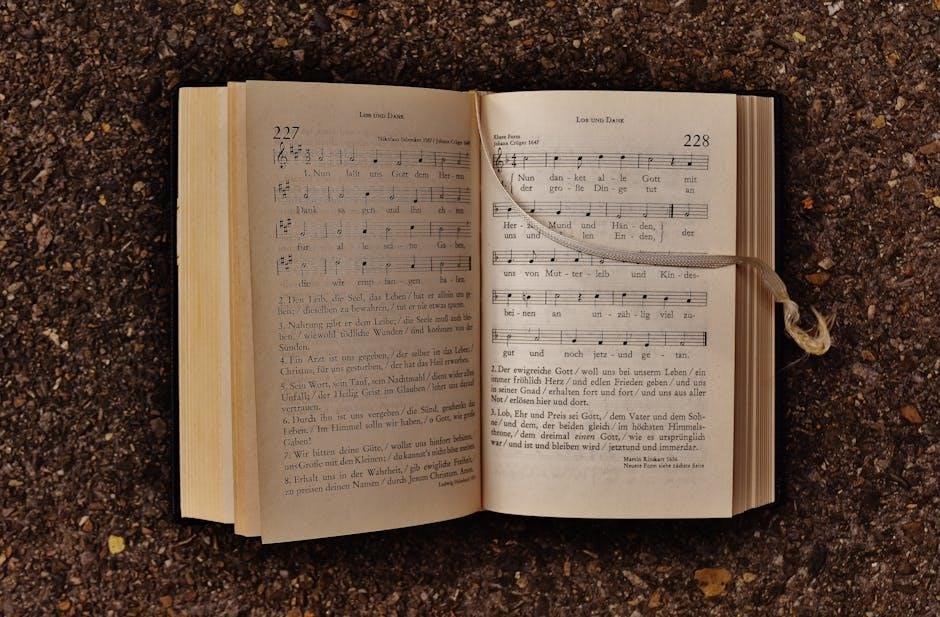
The Hymnal 1982 Service Music
The 1982 Hymnal Service Music is an integral component designed to enhance liturgical celebrations. This section provides settings for various parts of the service, including Mass settings such as the St. Marks Mass. The inclusion of service music aims to provide congregations and musicians with resources to create meaningful worship experiences.
Unlike the main hymnal, which focuses on congregational singing, the Service Music offers arrangements for choirs and instrumentalists, adding depth and richness to the liturgy. This section may include settings for the Kyrie, Gloria, Sanctus, and Agnus Dei, among other liturgical elements. The Service Music reflects a commitment to musical excellence and liturgical integrity, providing a valuable resource for churches seeking to enrich their worship services. Its inclusion alongside the main hymnal underscores the importance of music.

Resources and Companion Materials
To enhance the use of the 1982 Hymnal, several resources and companion materials have been developed. These materials offer additional insights and support for musicians, clergy, and congregations. Companion volumes provide essays on church music, historical context, and detailed information about the hymns and their composers.
Indexes and search features aid in locating specific hymns by author, first line, tune name, or topic. Audio recordings of hymns offer valuable learning tools for choirs and individuals. Page scans provide access to the original notation and text, preserving the hymnal’s integrity. Resources also include guides for incorporating the hymnal into various liturgical settings. These companion materials enrich the hymnal experience, fostering a deeper appreciation for the music and its role in worship. They support the hymnal’s use in both personal and corporate settings.
The Hymnal 1982: A Lasting Legacy
The 1982 Hymnal stands as a testament to the enduring power of sacred music within the Episcopal Church and beyond. Its lasting legacy is evident in its continued use in congregations worldwide and its influence on contemporary hymnody. The hymnal’s inclusive selection of hymns, spanning diverse historical periods and theological perspectives, has fostered a sense of unity and shared identity among worshippers.
By addressing social justice themes and incorporating contemporary compositions, the hymnal reflects the evolving needs and concerns of the Church. Its accessibility in PDF format ensures its continued relevance in the digital age, allowing individuals and communities to engage with its rich musical heritage. The 1982 Hymnal remains a vital resource for worship, education, and spiritual formation, shaping the faith and practice of generations to come. It continues to inspire and uplift, solidifying its place as a cornerstone of liturgical music.
